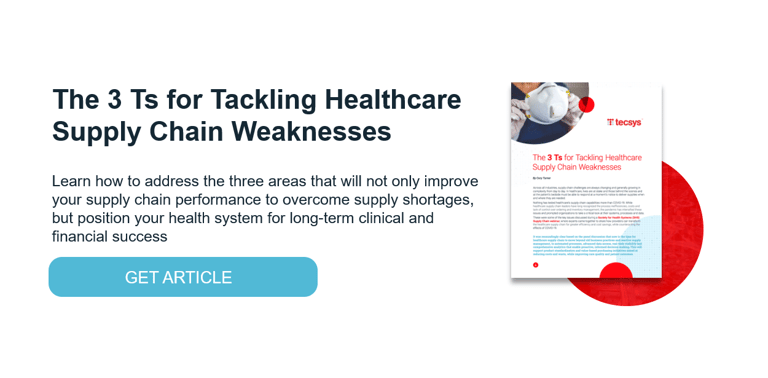Healthcare Inventory Management: Three Ways to Address Supply Hoarding

It is a clinician’s main priority to care for his or her patient and that means having the necessary medical supplies on hand. In many health systems and hospitals, there has been a historical distrust among clinicians in the reliability of their organization’s healthcare supply chain inventory management. Any clinician that has experienced a supply stockout or has had a physician breathing down their neck demanding that they find a specific item for a case has every reason to fear supply chain disruptions.
As a result, supply hoarding is common practice among clinicians throughout the healthcare industry. Clinicians often take it upon themselves to create their own emergency stockpiles, with some going so far as to hide coveted supplies in the ceiling tiles of procedural areas. That way, if supply chain processes fail and the facility runs out of an item, the clinicians can turn to their private reserves for what they need. In most cases the intent is good — the patient is the priority and clinicians will do what is necessary to maintain continuity of high-quality care.
But from a supply chain perspective, these practices can be disastrous. Having enough supplies on hand to meet clinician and patient demand without carrying excess inventory with unused items expiring on the shelves is a delicate balancing act in healthcare. Expired and lost inventory is not only a significant cost to healthcare organizations, it also places patient safety at risk if a clinician doesn’t have what they need to care for a patient, or inadvertently uses an expired item. Hoarding among clinicians increases the risk for these issues as the supply chain has no way to track these products and their use.
The supply chain disruptions caused by the COVID-19 pandemic, with clinicians not having access to personal protective equipment (PPE) and other critical supplies, has only served to increase fears of shortages and prompt more clinicians to stockpile supplies.
The challenge for supply chain leaders is to build trust among clinicians. Here are three ways to leverage technology and automated processes to improve healthcare inventory management and gain clinician confidence.
1. Introduce Real-time Inventory Tracking
If the supply chain team doesn’t have visibility into or control over its inventory, how will it convince clinicians to trust them? Manual inventory management processes involving human intervention at every step for supply documentation breeds inefficiency and errors and makes it impossible for supply chain leaders to gain timely access to supply status. Leverage a healthcare inventory management system that automates supply tracking from receipt, into inventory and through to patient utilization. With barcode or RFID technology to electronically document a product’s status, supply chain teams can show clinicians real-time inventory availability to build confidence and help alleviate fears.
2. Make It Easy – and Easily Understood
Even the most advanced inventory management systems won’t work if clinicians refuse to use them. Implement a system that is easily integrated into existing clinical workflow with no “heavy lifting” required by clinicians. A single barcode or RFID scan of a product by a clinician at the point of use (POU) where the data populates multiple, integrated systems is one example of this approach. Not only must supply chain leaders make it easy, they must also educate clinicians on how POU product data capture impacts supply availability. For example, if a clinician wastes a product in a procedure (opens a product that goes unused or drops it on the floor), it is still important to document that product as “wasted” in order to trigger supply replenishment. Healthcare supply chain automation can help reduce waste and ensure the right products are available at the right time. With regards to patient safety, emphasizing how POU capture supports adverse event reporting and recall tracking can help drive its importance home to clinical stakeholders.
3. Bring It In-house
Even when clinicians have confidence in their supply chain team’s ability to manage supplies within the four walls of a hospital, they may be skeptical of supply management capabilities further upstream. When supplies reside in an off-site warehouse where there is a reliance on third-party transportation or logistics companies to get products in the hands of clinicians, that perceived lack of control can breed fear and distrust. Health systems that have established a consolidated service center (CSC) with a self-managed network for storage, management and distribution of supplies, can offer their clinicians visibility into system-wide supply availability and greater confidence in the supply chain’s ability to deliver products as they are needed.
Clarify Uncertainty in Your Supply Chain
Supply chain uncertainty leads to business insecurity. Without holistic solutions for your supply chain challenges, your clinicians will continue to hoard supplies and compromise your ability to deliver quality patient care. With the right healthcare inventory management solution, you can create a transparent, intricately structured and responsive supply chain for your organization.




